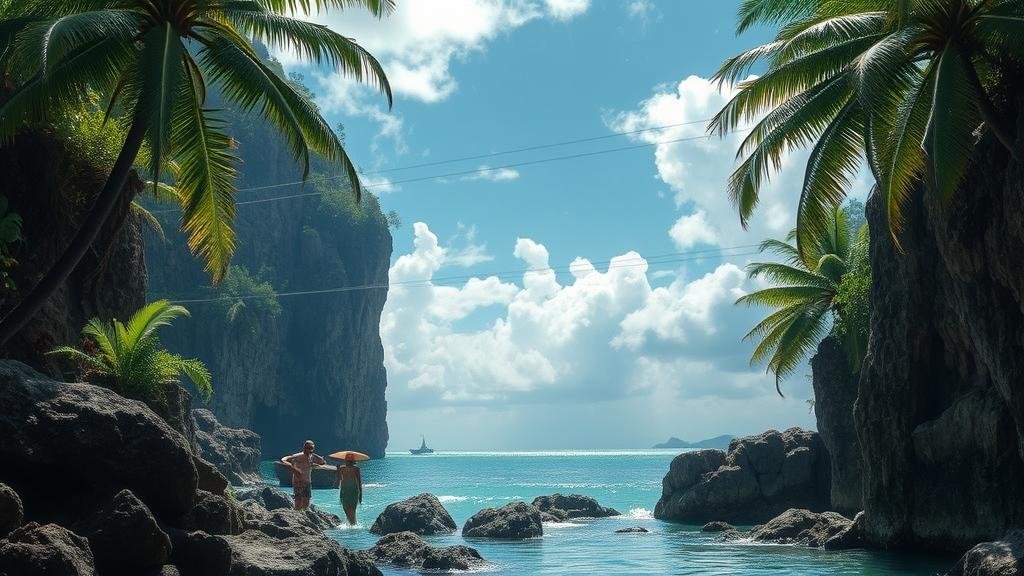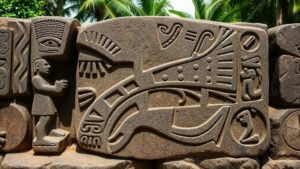Exploring uncharted regions of the Pacific for signs of ancient Polynesian cities.
Exploring Uncharted Regions of the Pacific for Signs of Ancient Polynesian Cities
The Pacific Ocean, often considered the world’s last great frontier, is home to numerous uncharted territories that could hold the key to understanding the ancient Polynesian civilization. Researchers and historians have increasingly focused on uncovering the secrets of Polynesias past, and recent technological advancements have made it possible to venture into these uncharted regions to search for signs of ancient cities. This article delves into the significance of this exploration, highlights notable findings, and discusses the methodologies employed in this quest.
The Historical Context of Polynesian Exploration
The Polynesians, renowned for their remarkable seafaring skills, navigated vast stretches of the Pacific Ocean over a millennium ago. Stretching from the Marquesas Islands to New Zealand, this civilization thrived in isolation, creating distinct cultural identities. Archaeological evidence, including the construction of significant structures and settlement patterns, indicates that Polynesians had complex societies, which are often underestimated.
For example, Rapa Nui (Easter Island) is well-known for its colossal stone moai statues, believed to be linked to their ancestor worship and social structure. These achievements prompt experts to investigate whether other sites exist that could challenge or enhance our understanding of ancient Polynesian civilization.
Technological Advances Driving Exploration
Recent technological advancements have opened new avenues for exploration in the Pacific. Techniques such as remote sensing, Lidar (Light Detection and Ranging), and GIS (Geographic Information Systems) are transforming how researchers examine these uncharted regions.
- Remote Sensing: Satellites equipped with multispectral imaging capture high-resolution images of landforms, helping researchers identify potential archaeological sites.
- Lidar: Used extensively in areas with thick vegetation, Lidar technology can penetrate foliage to reveal underlying structures that might indicate ancient human activity.
- GIS: This systematic approach allows scientists to analyze spatial data effectively, providing insights into settlement patterns and resource management strategies of ancient societies.
Recent Discoveries and Ongoing Research
Explorations in lesser-known islands like the uninhabited Baker Island or the remote Kermadec Islands have yielded promising results. In 2022, researchers discovered extensive agricultural terraces on the slopes of Taveuni in Fiji, suggesting sophisticated farming practices. A study published in the Journal of Pacific Archaeology in early 2023 reported findings of stone tools and habitation remnants on a previously unexamined atoll in Tuvalu.
Also, underwater explorations are equally revealing. discovery of submerged structures near the island of Guam suggests that sea levels may have been significantly lower during the time these cities were inhabited. This paradigm shift emphasizes that ancient Polynesian cities could be located not only on land but under water as well.
Ethical Considerations in Archaeological Exploration
As researchers delve into these uncharted regions, ethical considerations must be taken into account. Collaboration with local communities is vital to ensure that discoveries are preserved respectfully. For example, in 2023, a partnership was formed between Pacific Islanders and archaeologists to guide exploration efforts and prioritize indigenous perspectives on heritage.
Also, policies regarding the repatriation of artifacts and the significance of traditional knowledge are gaining traction. Including local voices in research decisions enhances the overall understanding of Polynesian culture while ensuring that the knowledge of these ancient civilizations is not erased.
Real-World Applications of Discoveries
The findings from ongoing explorations have implications not only for academic circles but also for contemporary society. Understanding the Polynesian methods of navigation, agriculture, and societal organization could provide insights into sustainable practices in todays world, especially in the context of climate change and environmental degradation.
Plus, the cultural revival fueled by discoveries can promote tourism and local economies. Regions implicated in these findings can harness their historical significance to encourage cultural tourism, fostering a renewed interest in Polynesian heritage.
Conclusion: The Importance of Exploration
Exploring the uncharted regions of the Pacific for signs of ancient Polynesian cities is not only an academic pursuit but a cultural and ethical responsibility. The discoveries made in these explorations enrich our understanding of human history and demonstrate the ingenuity of the Polynesian people. As technologies continue to evolve, the potential for uncovering new information and fostering connections to the past will only expand.
In summary, sustaining this momentum in exploration can lead to a better understanding of ancient societies while paving the way for cultural preservation and sustainable practices today. Stakeholders in both academia and the local communities must continue collaborating to confront the challenges of exploration and heritage management within the Pacific Ocean.



